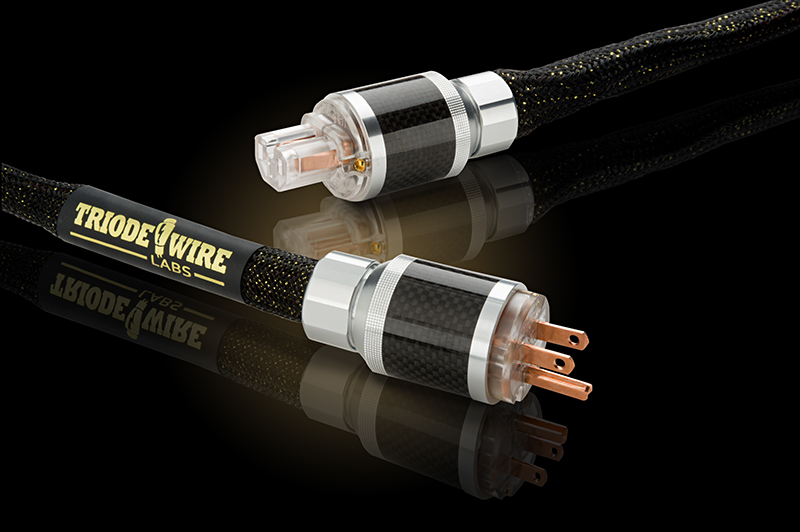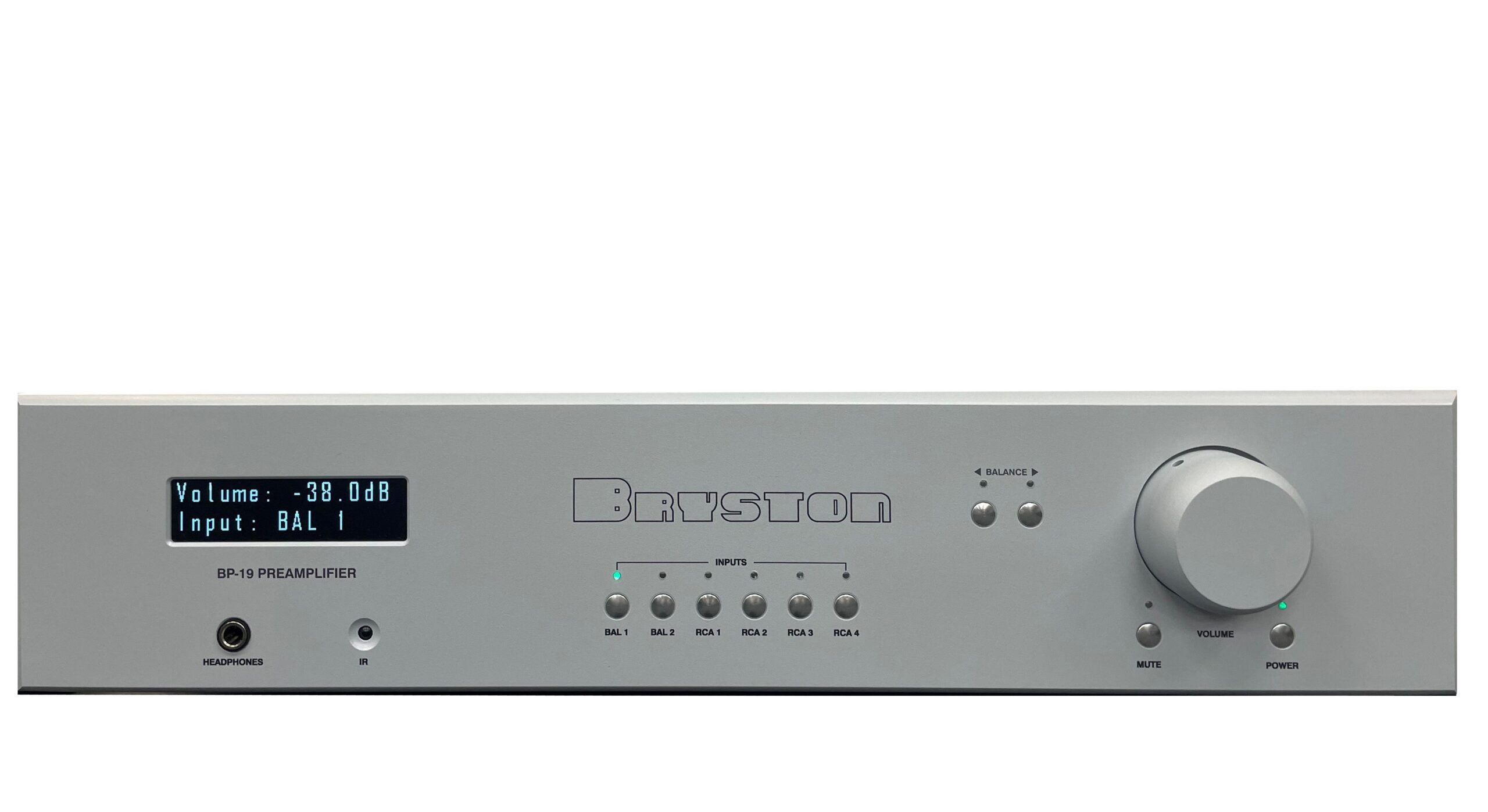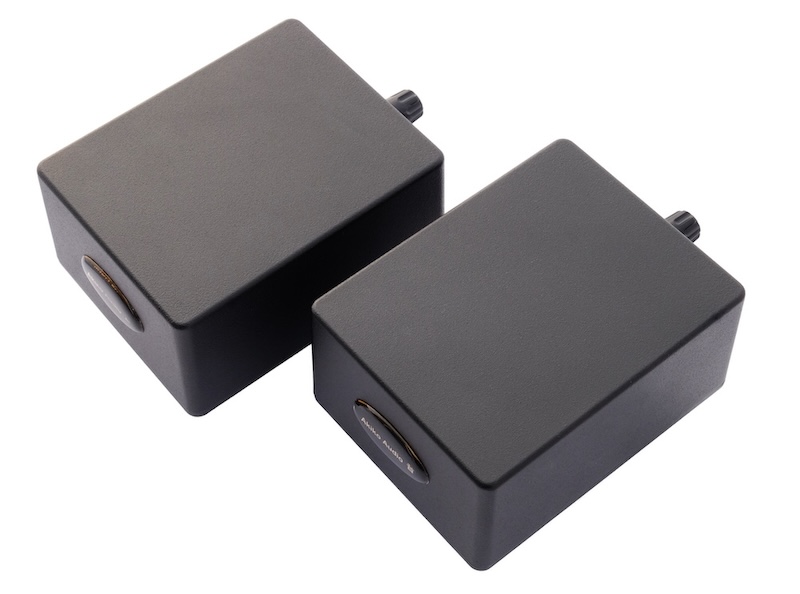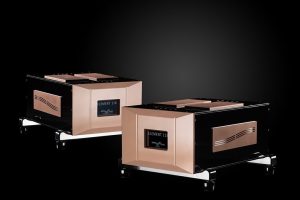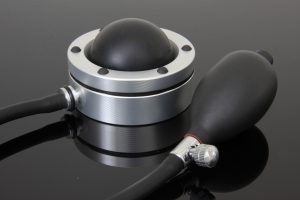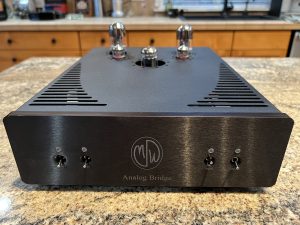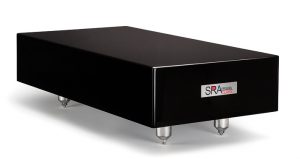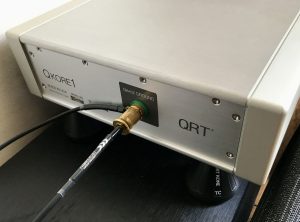Having covered audio shows for many decades now, I have learned to take it with a pinch of salt when I hear exhibitors bandy about words like "revolutionary", "game changer", and "new generation" in trying to get you to focus on their products. However, what was different as I started my coverage of TAVES in 2016 is that, this time, many TAVES visitors, whose opinions I respected, were using these very same words. That really got my attention, especially since the buzz was all focused on just one exhibitor—SweetVinyl. So it was with a good deal of curiosity that I made a bee line to the SweetVinyl Room.
Relatively speaking, the SweetVinyl room was very Spartan with just a desk and a chair with Dan Eakins, one of the three founders of SweetVinyl, demonstrating a very modest audio system that he claimed to have picked up from a Best Buy. The system consisted of a basic turntable, an amplifier with a phono stage, a pair of headphones, and an intriguing component called the SugarCube. For such a modest room and a brand that is new to the audiophile world, this room had a continuous stream of very excited visitors.
I patiently waited my turn and when I finally got to listen to the audio system, my jaw hit the floor. What was playing was an LP that was not exactly in mint condition. I could hear snaps, pops, and crackles that were almost as loud as the music itself. Then Dan switched in the SugarCube and most of those gremlins disappeared. What was even more astonishing was that hardly any of the fidelity of the music was affected. I could not believe my ears and so I requested Dan to switch the SugarCube out and then in again a few more times. Every time, the effect was the same.
Without hesitation, I asked Dan if he would be interested in getting his product reviewed. With a broad grin, he told me that he had received several review offers, but that the technology behind the SugarCube was in its infancy and needed a lot more work, especially on the software side, before it would be ready for a professional review.
Over the past couple of years, I keep in touch with Dan to follow up on the progress of the SugarCube and then finally in March 2018, Dan declared that his baby was finally ready for its prime time debut and that he would be glad to get me a unit for a review. Kurt Martens, owner of Essential Audio Corp., the distributor for SweetVinyl in Canada, delivered and SC-1 unit to me.
SweetVinyl offers two models, the SugarCube SC-1 and the SC-2 (soon to be in production). Both are all-in-one vinyl record noise removal and recording/playback components that enable non-destructive click and pop removal on any LP in real time. Both units have a built in high-resolution ADC and DAC. In addition the SC-2 is also capable of providing automatic metadata identification, tagging, and track splitting when recording to a connected USB storage device. The SC-1 retails for US$2000 in America and C$2600 in Canada.
I hooked up the SC-1 between my phono stage and my preamp and proceeded to burn it in, during which time I went through the literature to get to know the unit better. The SC-1 can also be connected to the tape loop monitor of your preamp if it has the option and if that is your preferred way to go. The advantage of this configuration is that, rather than rely on the unit's bypass mode, you can switch out the SugarCube completely when playing your mint condition records. Having said that, the SC-1 is equipped with an audiophile grade relay to disengage the digital processing, so any loss using the bypass option should be negligible.
At the heart of the SC-1 is a non-destructive, digital click and pop noise recognition algorithm, which allows the unit to operate in the digital domain rather than frequency domain. The connections are straightforward with RCA inputs and outputs, two USB ports, an Ethernet port. The power switch is located at the back. The front of the unit features a screen to display information as well as three buttons for bypass, click remover and click monitor modes. There is also a rotary knob to adjust the strength of the click removal from 1 for minimal repair to 10 for the most intensive processing.
The USB and Ethernet ports allow you to connect the unit to your local network and to the Internet. A Wi-Fi USB module is provided so that you can wirelessly connect and remotely control the unit via an IOS or Android smartphone or tablet. The SweetVinyl app can be downloaded for free. If you do not have an Internet connection or a wireless home network, you can still operate the SC-1 using just the front controls on the unit. The SC-1 is designed for use with virtually any phono stage.
Included with the SC-1 is a Dr. Feickert ProgTec 7" test LP (33.33 RPM) and which plays a 3.15kHz signal that lets the SC-1 adjust the gain for cartridges that are much too hot. If you are not happy with the adjustment made, you have the option of returning to the default setting. I tried this and it did made a noticeably positive difference to the sound quality.
When playing mint or near mint conduction vinyl records, you use the bypass mode which gets the SC-1 to simply pass through the signal. For records with audible clicks and pops, you can choose from options 1 to 5 and when the clicks and pops are really loud, options 6 to 10 are geared to handle those.
For most of my record collection, I rarely had to go beyond option 3. There were a few of my older and more worn records that needed option 4 or 5 and just a handful of records where I needed to go to option 9, but then the condition of those records are a real dog's breakfast, to say the least.
The click monitor setting is a clever way to let you hear the actual clicks and pops in real time, on a particular record while it is playing. In this mode the music portion of the signal is suppressed to let the clicks and pops stand out. This setting is a great tool to help you gauge which click remover setting to go with, for each record you play. You can adjust the control to the appropriate setting in real time. In the click monitor mode, you can sometimes hear some music along with the clicks and pops. Dan assured me that this does not mean that some music is also being deleted with the clicks and pops. What you are actually hearing is the un-repaired audio suppressed signal before it undergoes any repair.
As I mentioned before, the SC-1 works using algorithms in the digital domain. It is not frequency based. That is why it is so effective in removing the clicks and pops with minimal impact on the actual music. Other vinyl noise reduction devices I have encountered have relied on identifying frequencies or bands where the clicks and pops occur and then attenuating those frequencies. The problem with that approach is, along with the clicks and pops, some of the music also gets attenuated.
In contrast the SC-1 looks for events in the time domain and then corrects the audio to remove them by interpolating the slope of the preceding audio. These repairs are so tiny and distinct; the human ear can hardly perceive them. In fact, if a sound engineer was tasked with removing vinyl record noise manually, this is the modus operandi that he or she would probably adopt.
It is a fact that clicks and pops are distinct from most music, in that, musical sounds typically have an attack and decay that look quite different over time to clicks and pops. The algorithms take advantage of the fact that music has repeating patterns, while clicks and pops are isolated impulses that stand out in duration and strength.
The SweetVinyl created algorithms hunts in real time for candidates to repair and then applies pre-defined rule sets on these to make sure they are not music. For most instruments, this modus operandi is pretty straightforward. However, there are certain percussion instruments that produce sounds that can generate patterns akin to what would be generated by clicks and pops. Good examples are the sound of a drumstick on a drum rim, where the attack and decay are roughly symmetrical. SweetVinyl has identified many of these and they have update the software rules when they find such cases. This is why the software on the SC-1 needs such frequent updating. To help get updates done without any hassle to the user, SweetVinyl has programmed their products to automatically check via the Internet for any software updates with updated algorithms every time the unit boots up and then once every day. If a software update is detected, it is automatically downloaded and when there is no audio passing through the unit for one hour, the updated software is installed. Of course, this occurs only when the unit is constantly on and connected to the Internet.
SweetVinyl is currently working on improving the performance of their products' performance on very deep scratches and defects. They can't, of course, perform miracles when the record is horribly damaged, but they can still make those records easier to listen to. Another area where SweetVinyl is working on, is to properly recognize some electronic music where synthesized drumbeats may look identical to clicks and pops. They are hoping that future software updates will minimize the impact their products have on these recordings.
I do not think I would be exaggerating when I say that the SugarCube represent a paradigm shift in the way I listen to and enjoy music on vinyl records. First of all, it motivated me to categorize my record collection in a completely different way. Previously my vinyl collection was categorized into three lots: Mint, Near Mint, and others. Each category filed alphabetically. Now with the SugarCube, I have merged my Mint and Near Mint records because the SC-1 makes all my Near Mint records sound as good as my Mint records.
The SugarCube has also changed my habits when I shop for LPs. I used to totally ignore any LPs that were below Near Mint condition unless it was a collectible or it contained music that I could not find in digital media. Given what the SC-1 does, I now actively look for LPs that are rated Excellent, Very Good+, and even Very Good. Since these are usually a lot more affordable, I am now saving a significant amount of money when I shop for vinyl.
I am also now, a lot more reluctant to resell or gift to friends, LPs that have degraded to below Very Good+ condition. I also have great regrets for letting go of hundreds of degraded LPs over the past few decades.
The SC-1 has also made me look for records in places where I used to never consider shopping for vinyl. Places like garage sales, Goodwill, and Thrift Stores where the vast majority of vinyl are usually in the Very Good+ or below category.
One of my favourite artists is Cat Stevens and I have a Tea for the Tillerman record that, at best, could be categorized as Good. The only reason I held on to it was because it is so hard to come by Mint or Near Mint copies of this album. With the SC-1, I can play this record and actually enjoy listening to it because the only scratches I can clearly hear, is when the stylus is transitioning from one song to the next.
I had a few of my audiophile friends over to listen to what the SugarCube can do and I invited them to bring along their less than stellar condition records. I can still picture the amazed look on their faces when they heard such a clean, full fidelity reproduction from records that they considered not audiophile worthy.
The only glitch that I came across while using the SugarCube is when the unit occasionally goes mute between records, needing me to switch to the Bypass mode and then again to the Click Remove mode. I asked Dan if there was anything I could do to prevent this. According to Dan, this glitch is caused by static electricity coming through my tonearm to the analog lines of the SugarCube. Apparently SweetVinyl has been cognisant of this problem of complete loss of audio caused by static electricity. According to Dan, this problem usually occurs when users touch the SugarCube unit or when they inadvertently touch their tonearm, usually when flipping a record. This is more likely to occur in very cold conditions where the heating is on.
Muting occurs when the volume control integrated circuits in the unit kicks in to protect for voltage spikes that could damage the other components in the system; especially the speakers. Switching to the Bypass mode and then back to the Click Remove mode, activates a software reset. Apparently, short of an alternate ground path or a way to eliminate static electricity, this is the best way that Dan and his team could find to prevent static electricity from harming the rest of the system.
I asked Dan if the purpose of placing the power button behind the unit meant that the unit has been designed to be kept on all the time. Dan opined that 'always on' is an option and they have had units operating continuously for 8 months without any adverse effects. However he does feel it is okay to turn off the SugarCube along with the rest of your equipment.
The SugarCube has a 2-year warranty that covers parts and labour, but the warranty is not transferable. In Canada, Essential Audio Corp. is configured to do basic repairs, but for more complicated fixes, the unit is sent to SweetVinyl's home base in California.
In conclusion, I would say that if you are into vinyl, the SugarCube is a "must have" component in your audio arsenal. Not only will it enhance the pleasure of listening to your records that are less than Near Mint condition, but it will probably change the way you buy records, and also save you a ton of money in the process since you can now seriously consider buying Very Good and even Good condition records that are usually priced exponentially lower than their Mint or Near Mint counterparts.
I had no hesitation in purchasing the SC-1 to add to my reference system and once you give this component an audition, I am sure many of you vinyl lovers will also be tempted to do the same.
SC-1
Retail: $2000
SweetVinyl






